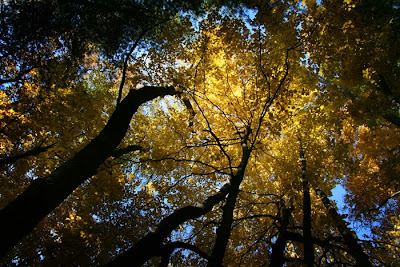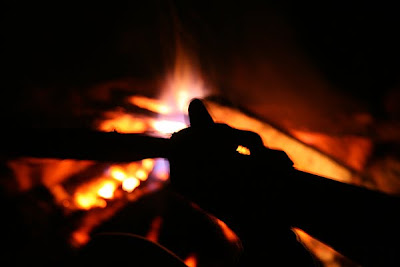
WHY DO OUR LEAVES CHANGE COLOR?
This year’s breathtaking fall colors are Nature’s last fling before settling in for the Arctic blast of winter’s turn on our calendar.
Days are shortening. Temperatures are frigid and, now, the vivid autumn palette has largely fluttered Earthward to nature’s composting renewal on the floor of the woods.
But, how and why does this happen? Scientists have worked for years to understand these autumnal changes and have found there are three factors that influence autumn leaf coloring; 1) leaf pigments, 2) length of night and 3) weather.
The timing of leaf color change is primarily regulated by the length of night. None of the other influences are as unvarying as that seasonal change.
As nights grow longer and cooler, biochemical processes in the leaf begin to paint our wooded landscapes.
The green leaves of summer are that color because of chlorophyll, an ingredient necessary for photosynthesis which enables trees to use sunlight to manufacture sugars for their food.
Two other pigments involved in fall’s changing colors are carotenoids and anthocyanins. The former produce the yellow, orange and browns while the latter produce the rest of the autumnal palette.
During the growing season, chlorophyll dominates and leaves appear green. As night lengthens in the fall, chlorophyll production slows down, then stops altogether. That’s when the other two are unmasked and show their brilliant colors.
The amount and brilliance of the colors that develop in any particular autumn season are related to weather conditions that occur before and during the time the chlorophyll in the leaves is dwindling. Temperature and moisture are the main influences.
A succession of warm, sunny days and cool, crisp but not freezing nights seems to bring about the most spectacular color displays.
The amount of moisture in the soil also affects autumn colors. Like the weather, soil moisture varies greatly from year to year. The countless combinations of these two highly variable factors assure that no two autumns can be exactly alike.
The composting mentioned earlier is the result of the fallen leaves and needles decomposing and restocking the soil with nutrients which become the food for soil organisms vital to the forest ecosystem—thus closing Nature’s marvelous cycle of death and renewal.
THE ABOVE PHOTO was taken October 21st while looking skyward along the west trail of my woods.
___________________
Ref: http://www.na.fs.fed.us/Spfo/pubs/misc/leaves/leaves.htm
This year’s breathtaking fall colors are Nature’s last fling before settling in for the Arctic blast of winter’s turn on our calendar.
Days are shortening. Temperatures are frigid and, now, the vivid autumn palette has largely fluttered Earthward to nature’s composting renewal on the floor of the woods.
But, how and why does this happen? Scientists have worked for years to understand these autumnal changes and have found there are three factors that influence autumn leaf coloring; 1) leaf pigments, 2) length of night and 3) weather.
The timing of leaf color change is primarily regulated by the length of night. None of the other influences are as unvarying as that seasonal change.
As nights grow longer and cooler, biochemical processes in the leaf begin to paint our wooded landscapes.
The green leaves of summer are that color because of chlorophyll, an ingredient necessary for photosynthesis which enables trees to use sunlight to manufacture sugars for their food.
Two other pigments involved in fall’s changing colors are carotenoids and anthocyanins. The former produce the yellow, orange and browns while the latter produce the rest of the autumnal palette.
During the growing season, chlorophyll dominates and leaves appear green. As night lengthens in the fall, chlorophyll production slows down, then stops altogether. That’s when the other two are unmasked and show their brilliant colors.
The amount and brilliance of the colors that develop in any particular autumn season are related to weather conditions that occur before and during the time the chlorophyll in the leaves is dwindling. Temperature and moisture are the main influences.
A succession of warm, sunny days and cool, crisp but not freezing nights seems to bring about the most spectacular color displays.
The amount of moisture in the soil also affects autumn colors. Like the weather, soil moisture varies greatly from year to year. The countless combinations of these two highly variable factors assure that no two autumns can be exactly alike.
The composting mentioned earlier is the result of the fallen leaves and needles decomposing and restocking the soil with nutrients which become the food for soil organisms vital to the forest ecosystem—thus closing Nature’s marvelous cycle of death and renewal.
THE ABOVE PHOTO was taken October 21st while looking skyward along the west trail of my woods.
___________________
Ref: http://www.na.fs.fed.us/Spfo/pubs/misc/leaves/leaves.htm









































